Supported by the LOC3G, Mr. Hao Yang and Mr. Bowen Wang, both PhD students at BOKU University, carried out an academic visit to PetroVietnam University (PVU) from June to August 2025.
During the visit, they shared aspects of their ongoing research with PVU faculty members and postgraduate students, contributing to discussions and exchanging ideas in the context of the collaborative research project.

LOC3G Research meeting at PVU
Mr. Hao Yang presented his recent research on two complementary topics: soil shrinkage modeling and the application of the Disturbed State Concept (DSC) to unsaturated soils.
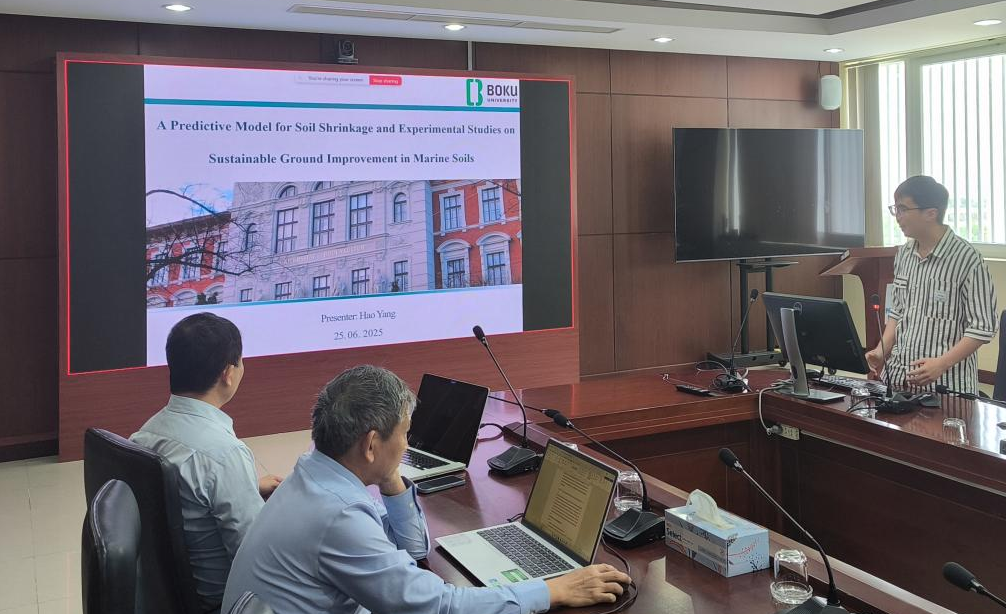
Presentation by Hao Yang at PVU
For the soil shrinkage study, a fully predictive Soil Shrinkage Curve (SSC) model was developed and validated using a comprehensive dataset from previously published experiments, demonstrating consistent accuracy across a wide range of soil types. Unlike conventional quantitative models that require the minimum void ratio as a predefined parameter, the proposed approach uses only the shrinkage limit and the air-entry value—two parameters for which reliable predictive methods are well established in the literature. This allows the model to estimate the minimum void ratio as an outcome, enhancing both theoretical transparency and engineering applicability.
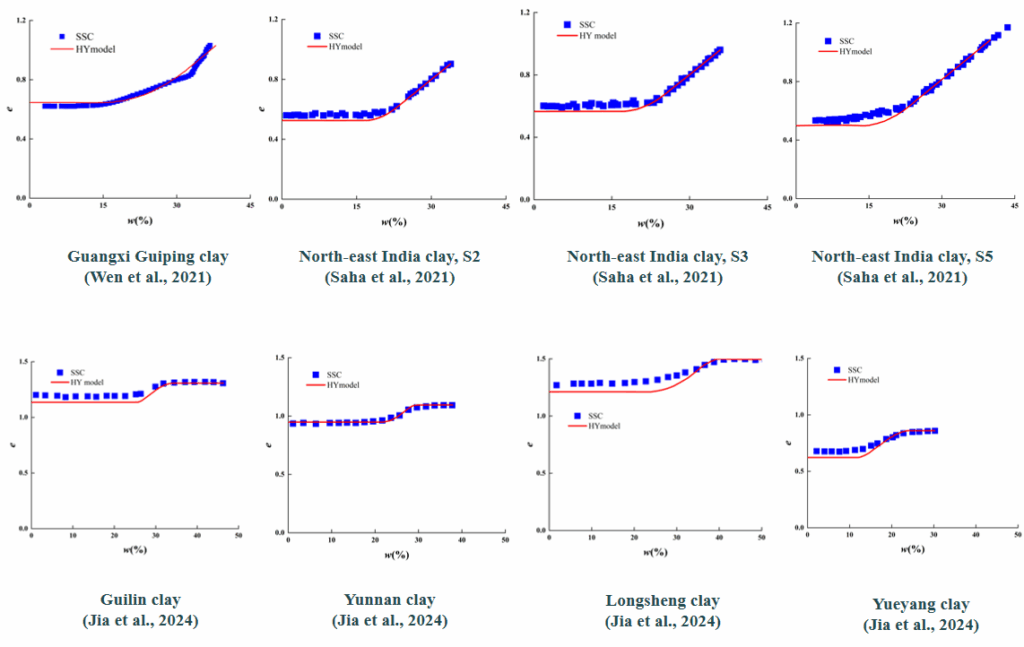
The SSC model’s performance
In a separate line of work, the DSC framework was extended through a newly formulated disturbance function expressed in terms of matric suction. This formulation provides a quantitative basis for capturing suction-induced structural changes, enabling rigorous simulation of key unsaturated soil behaviors such as wetting-induced collapse and drying-related hardening. Both studies contribute to improving constitutive modeling for unsaturated soils and hold practical value for geotechnical engineering in environments where soil moisture variations influence infrastructure performance.
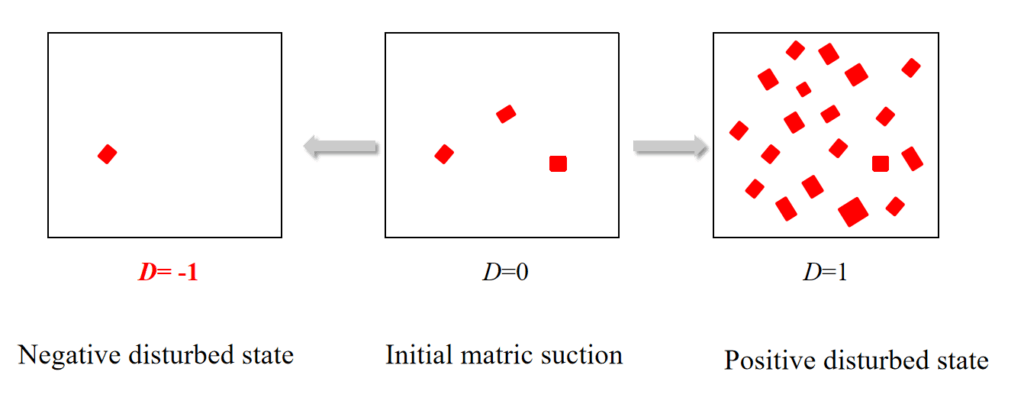
The disturbance based on matric suction
Mr. Bowen Wang delivered an academic presentation on the limit analysis of three-dimensional slope stability. He proposed a new limit analysis framework, including the establishment of a discretized failure mechanism for slope failure, along with corresponding improvements and adjustments to make it suitable for complex soil strength distributions and failure patterns.
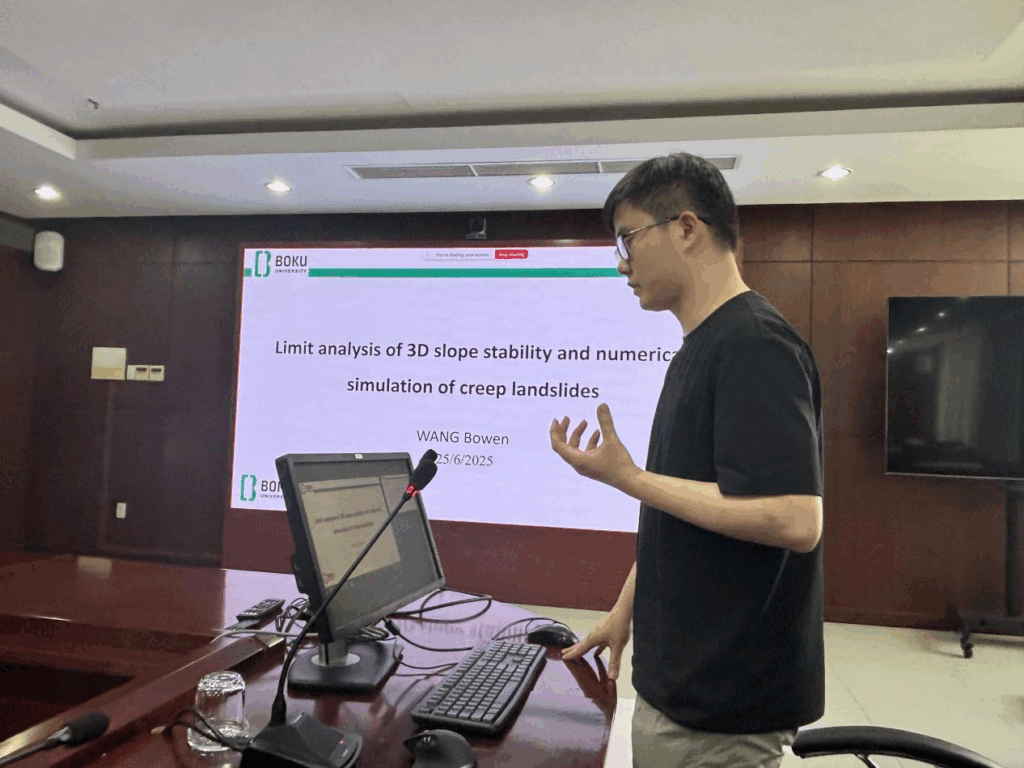
Presentation by Bowen Wang at PVU
Based on the principle of upper bound limit analysis, the associated flow rule is adopted, and 3D discretized failure mechanisms are generated in a point-to-point method. Some subsequent improvements included ellipticizing the initial discrete plane to accommodate narrower slopes and expanding the failure modes to consider base failure and surface failure. Finally, Physics-Informed Neural Networks are employed to assist in generating these mechanisms, which eliminated numerical errors and provided verification. Through the use of discretized mechanisms for nonhomogeneous slopes and a PINN-assisted framework, this study has extended the application of traditional upper bound analysis in slope stability. At the same time, it also revealed certain shortcomings, as deformation effects cannot be considered, obtaining a detailed stress distribution is difficult, and the method tends to evolve into a semi-analytical form, which reduces time efficiency.
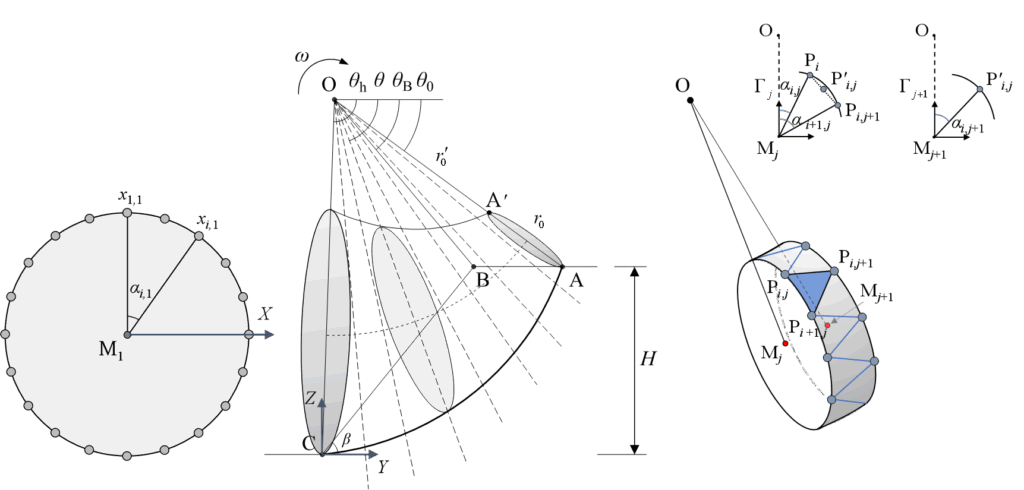
Schematic diagram of discretization failure mechanism generation
During the presentation, Prof. Giao, one of the members of the LOC3G project team, Associate Professor at PetroVietnam University (PVU), and Senior Specialist at the Vietnam Petroleum Institute (VPI)–provided a comprehensive overview of the project, outlining its current progress, recent milestones, and future research directions. With extensive expertise in subsurface exploration and computational methods in geoenergy resources and energy transition, Prof. Giao also highlighted the project’ s potential to advance geotechnical engineering research and foster international collaboration. Following the presentation, Hao Yang and Bowen Wang engaged in in-depth discussions with his research team on topics including deep carbon sequestration, wellbore stability, and landslide simulation, exchanging methodologies, experimental approaches, and modeling techniques.
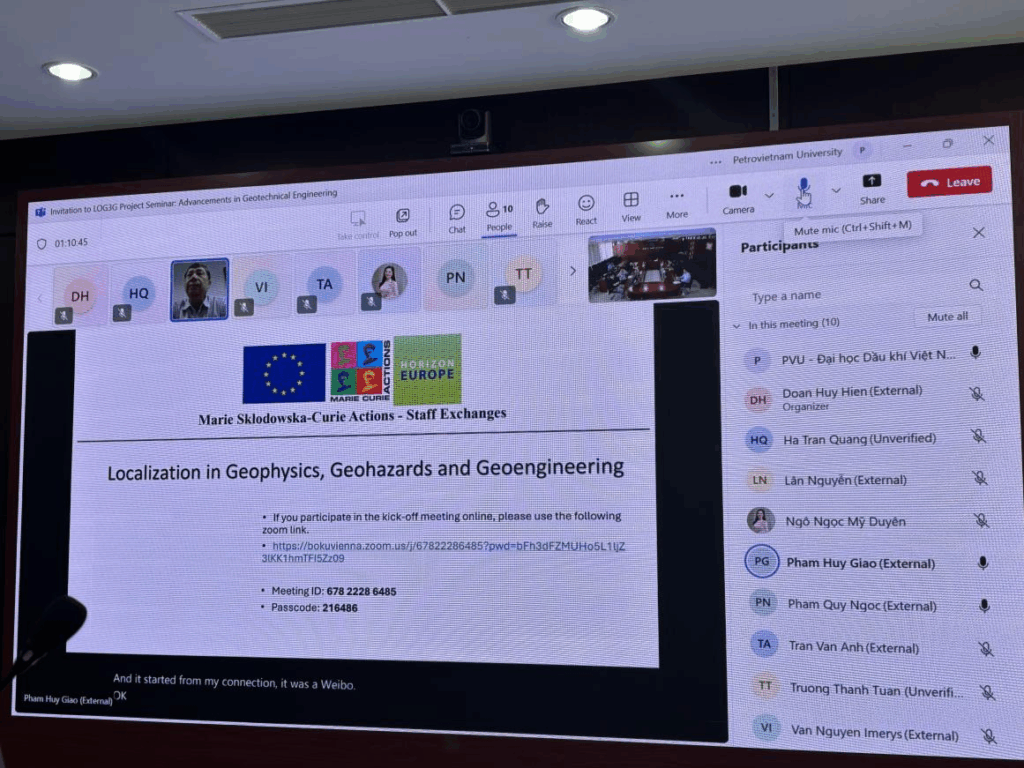
Introduction of the LOC3G project by Prof. Giao
In addition, they toured the PVU laboratories, gaining first-hand insight into the university’ s experimental facilities and ongoing research activities.
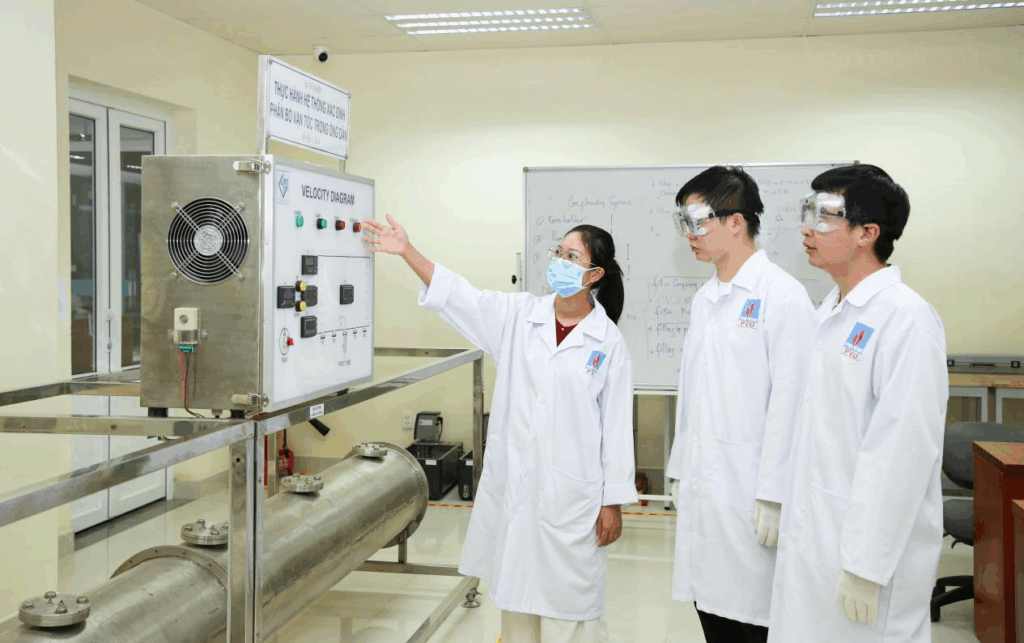
Visit to the laboratory at PVU
During the visit, Hao Yang and Bowen Wang also toured the Vietnam Petroleum Institute (VPI) in Hanoi, where they engaged in close academic discussions with Prof. Giao’ s team based in the capital. In particular, Hao Yang and Bowen Wang held an in-depth exchange with Prof. Giao on research related to unsaturated soils in Vietnam, with a specific focus on soil shrinkage behavior and its underlying mechanisms. These discussions further strengthened the mutual understanding of regional geotechnical challenges and laid the groundwork for potential collaborative studies.
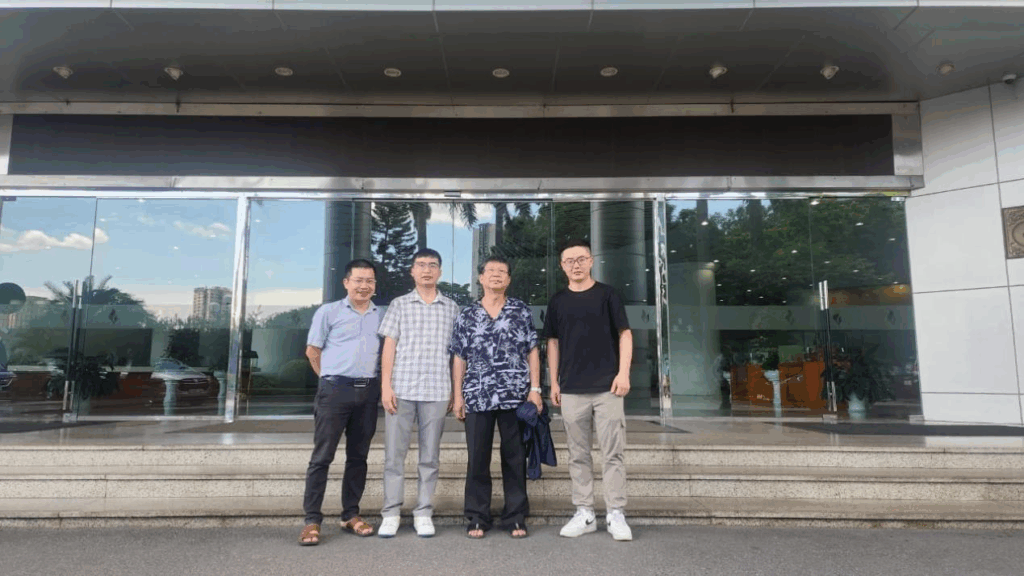
Group photo at the VPI Tower
At the VPI Tower, they were invited to deliver an academic presentation, which was also attended by researchers from other institutions in Vietnam.
Mr. Hao Yang presented two experimental studies. The first investigated the solidification of dredged marine clay through the combined use of industrial waste materials and CO2 carbonation. This approach not only enhanced the mechanical strength of the solidified soil but also achieved permanent carbon sequestration, and its effectiveness was further validated through field-scale application.
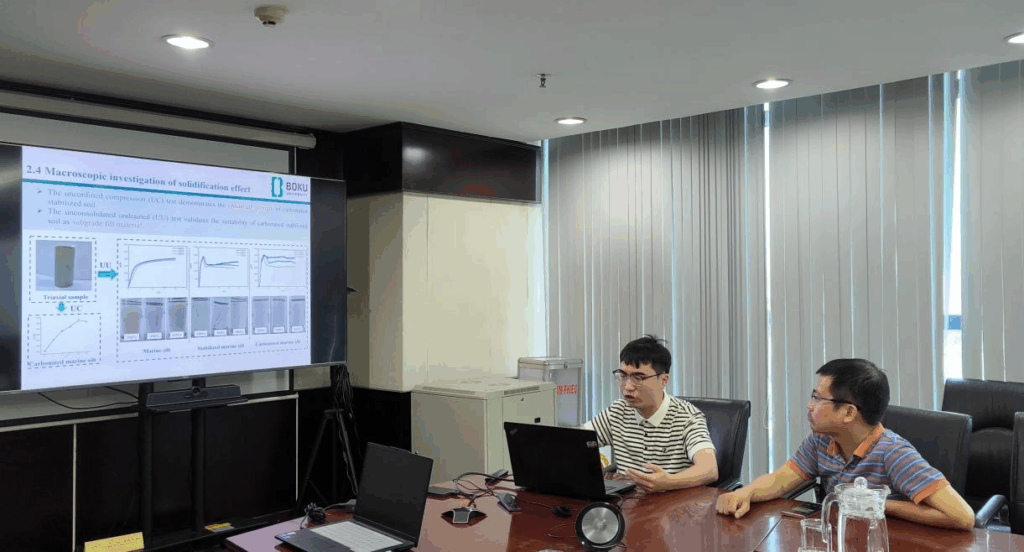
Presentation by Hao Yang at VPI
The second study examined the stabilization of calcareous sand using Microbially Induced Carbonate Precipitation (MICP), covering grout formulation optimization, microstructural mechanism analysis, and dynamic as well as static mechanical testing, thereby providing a comprehensive laboratory-based evaluation of the technique’ s feasibility and performance.
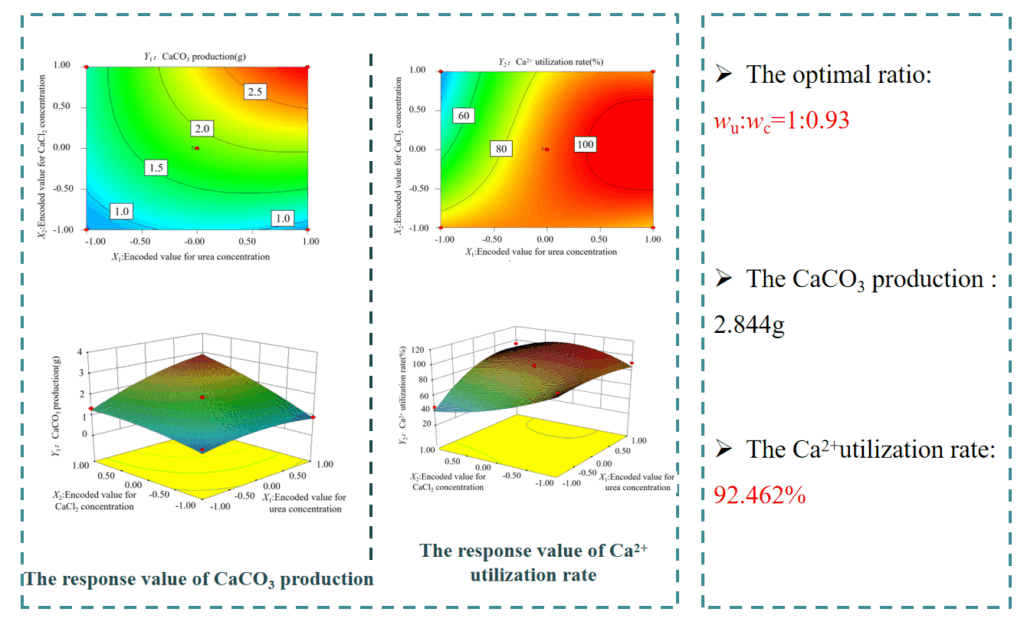
Optimal ratio of the cementing solution
Mr. Bowen Wang introduced his research topic and future work. His research focuses on slow-moving landslides, which are widespread and may suddenly accelerate into catastrophic events.
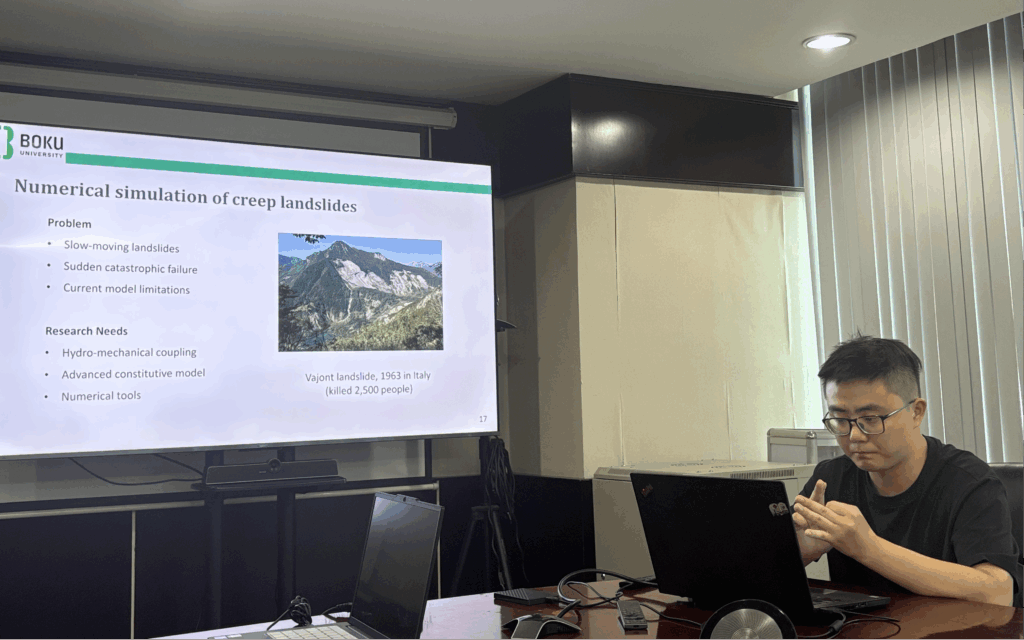
Presentation by Bowen Wang at VPI
The mechanisms behind this transition remain poorly understood due to simplifications in current models that ignore key factors such as rate-dependent behavior and partial saturation. To address this, Bowen Wang will develop a hypoplastic constitutive model considering both rate dependence and unsaturation. The model will divide stress rate into inviscid and viscous parts, with the viscous part including a higher-order tensor for strain acceleration to describe rate effects. Matric suction may be incorporated in a structural tensor to account for unsaturation. He will then apply the model to landslide simulation. Since classical numerical methods suffer from mesh distortion under large deformation, the Particle Finite Element Method (PFEM) will be used. PFEM combines the accuracy and convergence of finite elements with the flexibility of mesh-free methods for large deformation analysis. A two-phase PFEM framework will be developed to study coupled hydro-mechanical processes in unsaturated soils and applied to simulating slow-moving landslides, aiming to provide new numerical tools for hazard prediction.
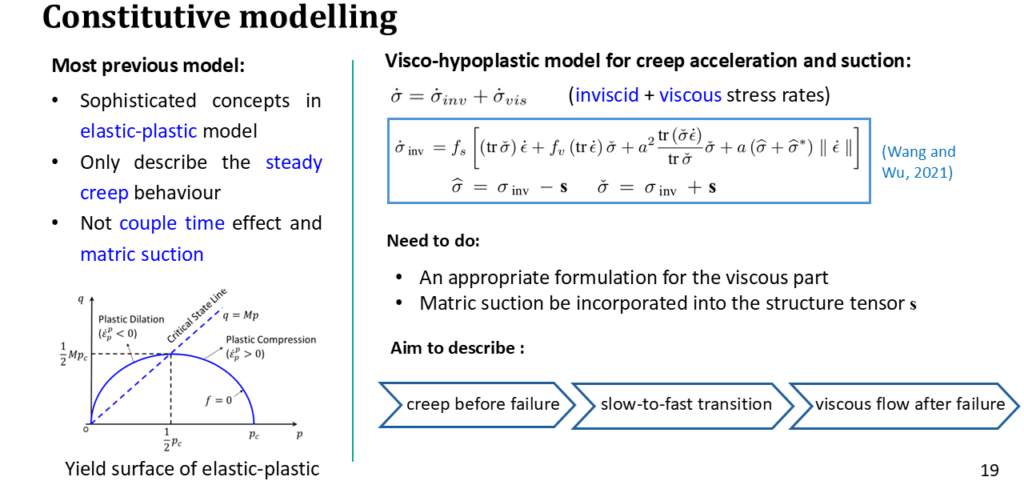
Framework of visco-hypoplastic model for creep acceleration and suction
In addition, on Prof. Giao’s recommendation, Hao Yang held a discussion with Prof. Chao, Head of the Department of Civil and Infrastructure Engineering at the Asian Institute of Technology (AIT) in Bangkok, Thailand, and current President of the Southeast Asian Geotechnical Society, on the shrinkage and wetting-drying cyclic behavior of unsaturated soils. Prof. Giao also recommended relevant literature on Discrete Element Method (DEM) simulations of wetting-drying cycles for further study. Meanwhile, Bowen Wang engaged with Dr. Lan Chau Nguyen from the University of Transport and Communications in Hanoi to share experiences and exchange ideas on landslide simulation. Dr. Lan presented their work on simulating a slow-moving landslide in Vietnam. Human activities and frequent rainfall caused by climate change, which raised the groundwater level, were the main causes of the landslide. The remediation involved backfilling the downhill area and constructing an anchored retaining wall. Numerical analysis and field monitoring verified the effectiveness of the remediation. Bowen Wang was interested in the seepage, unsaturation, and time-dependent displacement calculations in this simulation work, and they exchanged ideas on implementing these technical details in the PLAXIS finite element software.
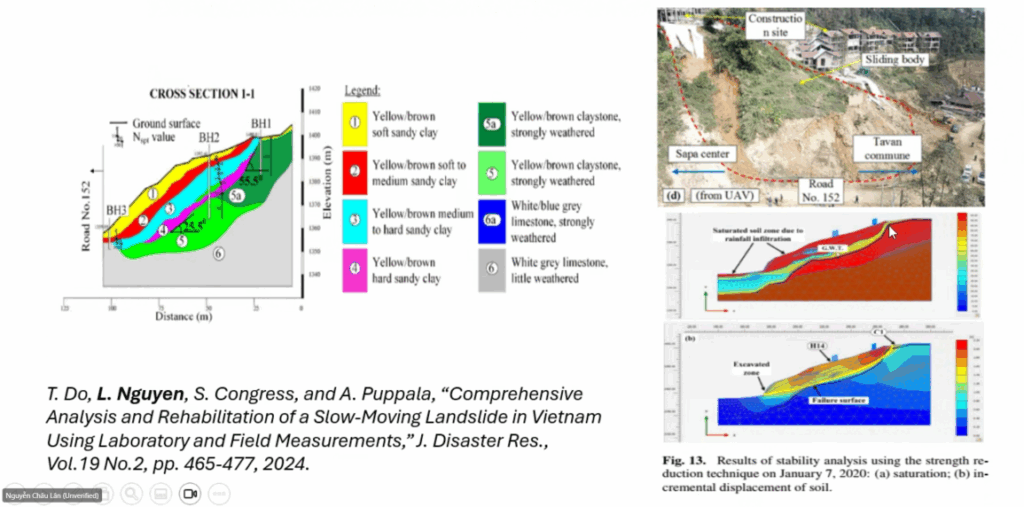
Finite element modeling of a slow-moving landslide in Vietnam